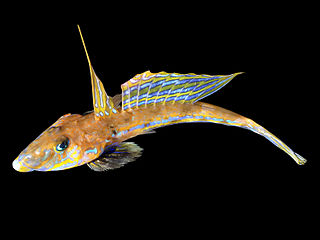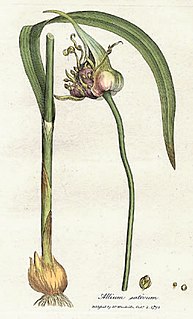
Equidae is the taxonomic family of horses and related animals, including the extant horses, asses, and zebras, and many other species known only from fossils. All extant species are in the genus Equus, which originated in North America. Equidae belongs to the order Perissodactyla, which includes the extant tapirs and rhinoceros, and several extinct families.

Rhododendron is a very large genus of about 1,024 species of woody plants in the heath family (Ericaceae). They can be either evergreen or deciduous. Most species are native to eastern Asia and the Himalayan region, but smaller numbers occur elsewhere in Asia, and in North America, Europe and Australia. It is the national flower of Nepal, the state flower of Washington and West Virginia in the United States, the state flower of Nagaland in India, the provincial flower of Jiangxi in China and the state tree of Sikkim and Uttarakhand in India. Most species have brightly colored flowers which bloom from late winter through to early summer.

Selaginella is the sole genus of vascular plants in the family Selaginellaceae, the spikemosses or lesser clubmosses.

In biology, a subgenus is a taxonomic rank directly below genus.

Sorbus is a genus of over 100 species of trees and shrubs in the rose family, Rosaceae. Species of Sorbus (s.l.) are commonly known as whitebeam, rowan (mountain-ash) and service tree. The exact number of species is disputed depending on the circumscription of the genus, and also due to the number of apomictic microspecies, which some treat as distinct species, but others group in a smaller number of variable species. Recent treatments classify Sorbus in a narrower sense to include only the pinnate leaved species of subgenus Sorbus, raising several of the other subgenera to generic rank.

In zoological nomenclature, a type species is the species name with which the name of a genus or subgenus is considered to be permanently taxonomically associated, i.e., the species that contains the biological type specimen(s). A similar concept is used for suprageneric groups and called a type genus.

The Plasmodiidae are a family of apicomplexan parasites, including the type genus Plasmodium, which is responsible for malaria. This family was erected in 1903 by Mesnil and is one of the four families in the order Haemospororida.

Chelodina, collectively known as snake-necked turtles, is a large and diverse genus of long-necked chelid turtles with a complicated nomenclatural history. Although in the past, Macrochelodina and Macrodiremys have been considered separate genera and prior to that all the same, they are now considered subgenera of the Chelodina, further Macrochelodina and Macrodiremys are now known to apply to the same species, hence Chelydera is used for the northern snake-necked turtles.

The genus Megachile is a cosmopolitan group of solitary bees, often called leafcutter bees or leafcutting bees; it also includes the called resin bees and mortar bees. While other genera within the family Megachilidae may chew leaves or petals into fragments to build their nests, certain species within Megachile neatly cut pieces of leaves or petals, hence their common name. This is one of the largest genera of bees, with more than 1500 species in over 50 subgenera. The alfalfa leafcutter bee is managed on a commercial scale for crop pollination, and has been introduced by humans to various regions around the world.

Lymnaeidae, common name the pond snails, is a taxonomic family of small to large air-breathing freshwater snails, aquatic pulmonate gastropod mollusks, that belong to the clade Hygrophila.

Neritidae, common name the nerites, is a taxonomic family of small to medium-sized saltwater and freshwater snails which have a gill and a distinctive operculum.

Callionymus is a genus of dragonets found mostly in the Indian and Pacific oceans with a few species occurring in the Atlantic Ocean.

Culicoides is a genus of biting midges in the family Ceratopogonidae. There are over 1000 species in the genus, which is divided into many subgenera. Several species are known to be vectors of various diseases and parasites which can affect animals. Like Leptoconops, the genus has a long fossil record, with earliest known fossils being from Burmese amber, around 99 million years old.

The Haemosporida are an order of intraerythrocytic parasitic alveolates.
Callionymus colini, the Tiny New Guinea longtail dragonet, is a species of dragonet endemic to the Pacific Ocean waters around Papua New Guinea. The specific name honours Dr Patrick L. Colin, of the University of Papua New Guinea's Motupore Island Research Station in Port Moresby, who collected the type specimen.
Callionymus hildae, Hilde's darter dragonet, is a species of dragonet endemic to the Pacific waters around the Philippines. The specific name honours Miss Hildegard Handermann, of Braunschweig, for her "continued interest" in the author's, Ronald Fricke's, studies.
Callionymus martinae is a species of dragonet endemic to the Pacific waters around Taiwan where it occurs at depths of from 73 to 92 metres. The specific name honours Miss Martina Wolf, of Braunschweig, for her "continued interest" in the author's, Ronald Fricke's, studies.
Spinicapitichthys spiniceps, the Seychelles spiny dragonet, is a species of dragonet known only from the waters around the Seychelles where it is found in weed beds. This species grows to a length of 15.2 centimetres (6.0 in) TL. It is the only species in the monotypic genus Spinicapitichthys which was previously considered to be a subgenus of the large genus Callionymus.
The Kai Island deepwater dragonet is a species of dragonet native to the Indian Ocean and the western Pacific Ocean, from Zanzibar and the coast of East Africa to the western Pacific Ocean including southern Japan, the East China Sea and the Banda Sea. It is the only species in the monotypic genus Bathycallionymus. This species was formally described in 1880 as Callionymus kaianus by the German-born British zoologist Albert Günther with from a type collected off Kai Island in the Banda Sea during the Challenger expedition of 1872–1876. Some authorities still place this fish in the genus Callionymus.

Allium is a genus of monocotyledonous flowering plants that includes hundreds of species, including the cultivated onion, garlic, scallion, shallot, leek, and chives. The generic name Allium is the Latin word for garlic, and the type species for the genus is Allium sativum which means "cultivated garlic".















